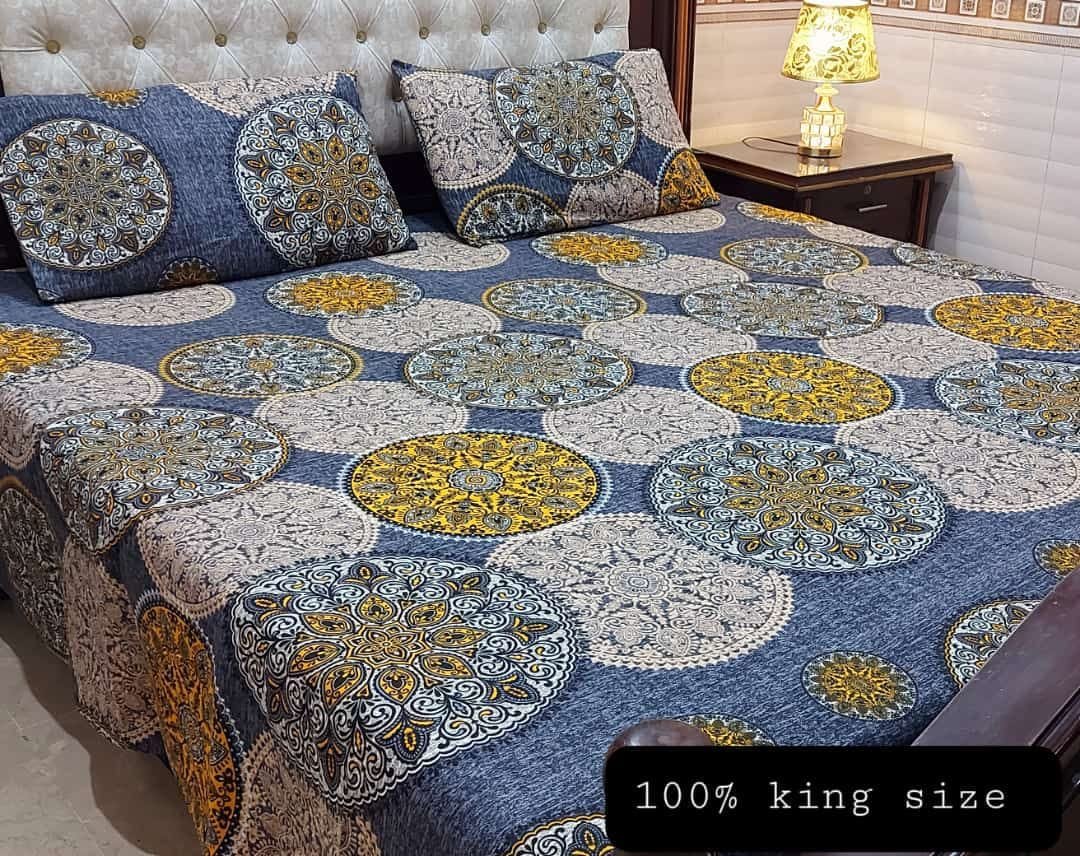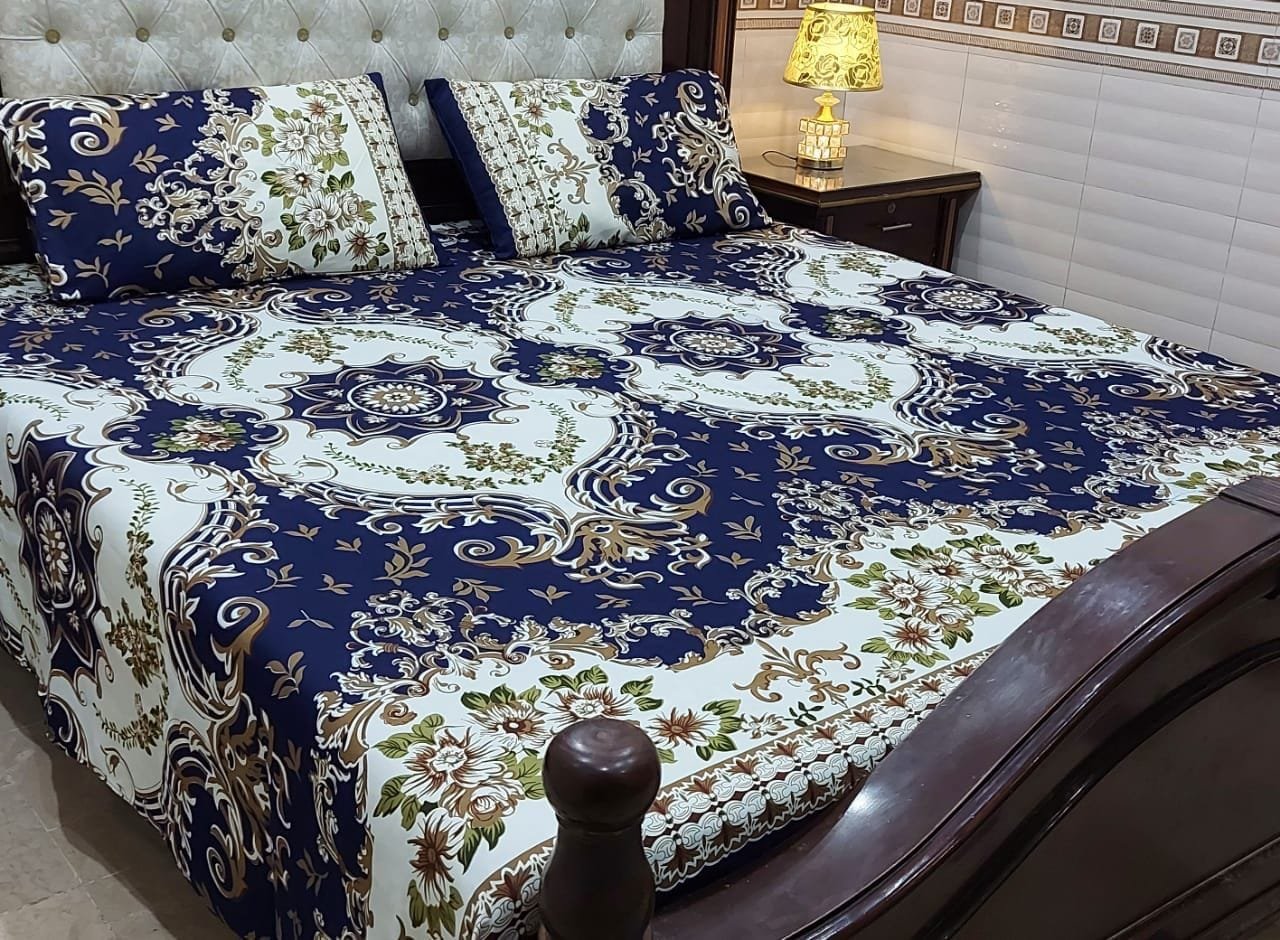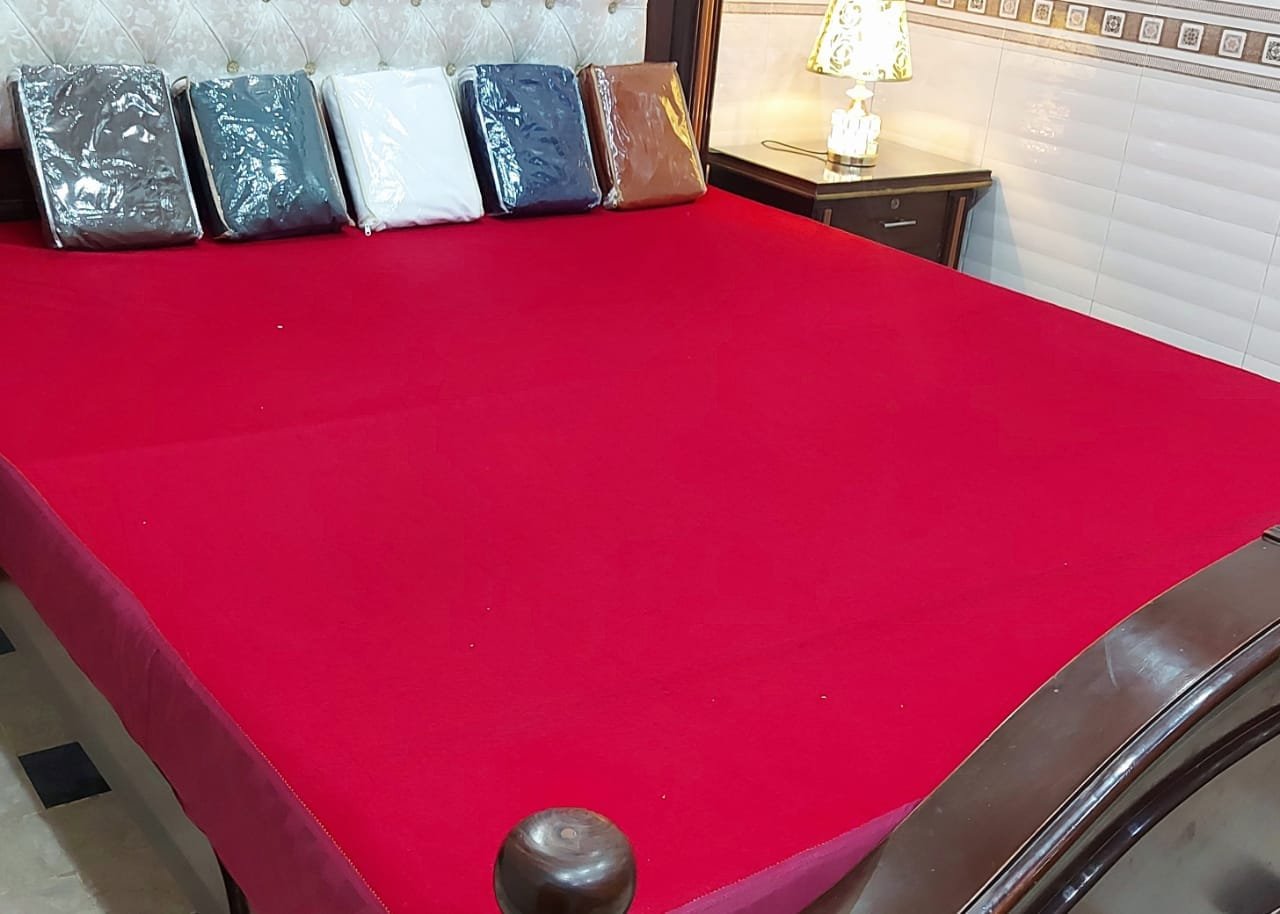Blogs
” Eco-Friendly Bedding Choices for a Sustainable Bedroom”
Introduction to Eco-Friendly Bedding Choices for a Sustainable Bedroom:
In a world increasingly concerned about environmental conservation, adopting Eco-friendly practices in our daily lives has become more important than ever. One area where we can make a significant impact is in our bedrooms, specifically through our bedding choices. By opting for sustainable materials and practices, we can create a cozy and environmentally responsible haven. Let’s explore some Eco-friendly bedding choices that can help transform your bedroom into a sustainable oasis.
1. Organic Cotton Bedding: Conventional cotton farming is known for its heavy use of pesticides and water resources. In contrast, organic cotton is grown without synthetic pesticides or fertilizers, making it a more environmentally friendly option. Organic cotton bedding, including sheets, duvet covers, and pillowcases, not only reduces the impact on ecosystems but also offers a soft and comfortable sleep experience.
2. Bamboo Bedding: Bamboo is a rapidly renewable resource that requires minimal water and pesticides to grow. Bamboo bedding products are not only soft and luxurious but also naturally hypoallergenic and moisture. Look for bedding made from bamboo viscose or for a silky feel and optimal sustainability.

3. Hemp Bedding: Hemp is a versatile plant known for its low environmental impact. Hemp cultivation requires minimal water, and the plant grows quickly without the need for synthetic chemicals. Choosing hemp-based bedding contributes to sustainable farming practices and reduces the reliance on resource-intensive materials.
4. Linen Bedding: Linen is made from the fibers of the flax plant and is known for its exceptional breath ability and moisture properties. Linen bedding is often considered a luxurious choice, as it becomes softer with each wash and has a charming, slightly wrinkled appearance.
5. Recycled Materials: Some companies now offer bedding made from recycled materials, such as plastic bottles or reclaimed textiles. These innovative options help reduce waste and divert materials from landfills. Recycled bedding can be just as comfortable and stylish as traditional options, while simultaneously contributing to a circular economy.
6. Natural Dyes: When choosing bedding, consider options that use natural dyes instead of synthetic ones. Natural dyes are derived from plant sources and are less harmful to the environment during production and disposal. They also tend to have a softer, more muted color palette that can enhance the calming ambiance of your sustainable bedroom.
7. Ethical Production: Beyond the materials themselves, consider the ethical aspects of production. Opt for brands that prioritize fair labor practices and minimize their carbon footprint throughout the supply chain. Certifications such as GOTS (Global Organic Textile Standard) and ensure that products meet certain environmental and social criteria.
Creating a sustainable bedroom through Eco-friendly bedding choices is a small yet step towards reducing your ecological footprint. By selecting materials that prioritize the planet’s well-being, you’re not only benefiting the environment but also ensuring a healthier and cozier sleep environment for yourself. As the demand for sustainable products grows, more options continue to emerge, making it easier than ever to transform your bedroom into a haven of comfort and consciousness.

8. Adjustable Bed Frames: While not directly related to bedding materials, investing in an adjustable bed frame can have sustainability benefits. These frames allow you to raise or lower the head and foot of your bed, enhancing comfort and potentially reducing the need for additional pillows. This can help prevent excessive consumption and waste of pillows, contributing to a more
9. Wool Bedding: Wool is a natural and renewable fiber that can be used in various Eco-Friendly Bedding products, including blankets, comforters, and mattress toppers. Wool is known for its excellent insulation properties, providing warmth in the winter and breath ability in the summer. Look for wool sourced from ethical and Eco-friendly farms, as responsible wool production can support regenerative agricultural practices.
10. DIY and Up cycled Bedding: For those who enjoy crafting and want to reduce waste, consider creating your own Eco-friendly bedding. Up cycling old fabrics or re purposing materials can lead to unique and personalized bedding creations. You can transform vintage fabrics into pillow covers, quilts, and even decorative headboards, giving new life to existing materials and reducing the demand for new resources.
11. Regular Maintenance: Maintaining your Eco-friendly bedding is as important as choosing sustainable materials. Follow care instructions to prolong the life of your bedding items and reduce the frequency of replacements. Regular washing and proper storage not only ensure that your bedding remains comfortable but also prevent the need for frequent replacements, thus reducing overall waste.
12. Circular Economy Initiatives: As the concept of a circular economy gains traction, more bedding brands are exploring take-back programs and recycling initiatives. These programs allow you to return old bedding items to the manufacturer for proper recycling or re purposing. Supporting such initiatives ensures that your old bedding doesn’t end up in landfills and can be transformed into new products.
Creating a sustainable bedroom involves a combination of conscious choices, from the materials you select to how you care for your bedding over time. By considering the environmental impact of your decisions and seeking out ethical and Eco-Friendly Bedding options, you can contribute to a healthier planet while enjoying a comfortable and inviting sleep environment. Remember that every small step towards sustainability adds up, and your commitment to Eco-Friendly Bedding choices can inspire positive change in your own life and beyond.
13. Minimalist Approach: Embracing a minimalist approach to your Eco-Friendly Bedding can not only create a clean and serene bedroom but also reduce consumption. Instead of piling on multiple layers of bedding, consider a simpler setup with a lightweight quilt or duvet and a couple of versatile throw blankets. This reduces the need for excess bedding items and fosters a more sustainable and clutter-free sleeping space.

14. Energy-Efficient Practices: Sustainability isn’t only about the materials you choose; it’s also about how you use them. Employ energy-efficient practices to maintain your Eco-Friendly Bedding. During colder months, layering blankets can allow you to lower the thermostat, while in warmer months, opting for lightweight and breathable bedding can help reduce the need for excessive air conditioning.
15. Support Local and Eco-Friendly Bedding When seeking Eco-Friendly Bedding options, consider supporting local artisans and businesses that prioritize sustainability. Locally crafted bedding items often have a smaller carbon footprint due to reduced transportation and support local economies. Plus, handmade pieces can add a unique and personal touch to your bedroom.
16. Mindful Purchasing: Before making any bedding purchases, take a moment to assess your actual needs. Avoid impulsive buying and opt for items that genuinely enhance your sleep experience. This mindful approach helps prevent over consumption and reduces the strain on natural resources.
17. Educational Outreach: Share your knowledge and passion for Eco-Friendly Bedding choices with friends and family. Educating others about the benefits of sustainable bedding can lead to a collective effort towards a more conscious lifestyle. Consider hosting workshops or sharing resources online to inspire others to make positive changes in their own bedrooms.
18. Longevity and Durability: Investing in high-quality, durable bedding items can have a substantial impact on sustainability. Items that last longer reduce the frequency of Eco-Friendly Bedding replacements, conserving resources in the long run. While initially pricier, durable bedding often pays for itself over time due to its extended lifespan.
19. Plant-Based Fillings: When choosing pillows, duvets, or mattress toppers, opt for those filled with plant-based materials like kapok, buckwheat hulls, or organic latex. These alternatives to traditional synthetic fillings are biodegradable and often more breathable, contributing to a healthier sleep environment.
20. Continuous Improvement: Sustainability is an ongoing journey. Keep yourself informed about the latest developments in Eco-Friendly Bedding materials and practices. As technology and innovation progress, new options for sustainable bedding may emerge, allowing you to continually refine your bedroom’s environmental footprint.
Creating a sustainable bedroom with Eco-Friendly Bedding choices is a powerful way to align your living space with your values. By considering the entire life cycle of your bedding items, from production to disposal, you can make a positive impact on the planet while enjoying a comfortable and conscious sleep environment. Remember, every choice you make matters, and collectively, our efforts can contribute to a more sustainable future.

Title: Eco-Friendly Bedding Choices for a Sustainable Bedroom
In a world increasingly concerned about environmental conservation, adopting eco-friendly practices in our daily lives has become more important than ever. One area where we can make a significant impact is in our bedrooms, specifically through our bedding choices. By opting for sustainable materials and practices, we can create a cozy and environmentally responsible haven. Let’s explore some eco-friendly bedding choices that can help transform your bedroom into a sustainable oasis.
1. Organic Cotton Bedding: Conventional cotton farming is known for its heavy use of pesticides and water resources. In contrast, organic cotton is grown without synthetic pesticides or fertilizers, making it a more environmentally friendly option. Organic cotton bedding, including sheets, duvet covers, and pillowcases, not only reduces the impact on ecosystems but also offers a soft and comfortable sleep experience.
2. Bamboo Bedding: Bamboo is a rapidly renewable resource that requires minimal water and pesticides to grow. Bamboo bedding products are not only soft and luxurious but also naturally hypoallergenic and moisture. Look for bedding made from bamboo viscose for a silky feel and optimal sustainability.
3. Hemp Bedding: Hemp is a versatile plant known for its low environmental impact. Choosing hemp-based bedding contributes to sustainable farming practices and reduces the reliance on resource-intensive materials.
4. Linen Bedding: Linen is made from the fibers of the flax plant and is known for its exceptional breath ability and moisture- properties. .

5. Recycled Materials: Some companies now offer Eco-Friendly Bedding made from recycled materials, such as plastic bottles or reclaimed textiles. These innovative options help reduce waste and divert materials from landfills. Recycled bedding can be just as comfortable and stylish as traditional options, while simultaneously contributing to a circular economy.
6. Natural Dyes: When choosing bedding, consider options that use natural dyes instead of synthetic ones. Natural dyes are derived from plant sources and are less harmful to the environment during production and disposal. They also tend to have a softer, more muted color palette that can enhance the calming ambiance of your sustainable bedroom.
7. Ethical Production: Beyond the materials themselves, consider the ethical aspects of production. Opt for brands that prioritize fair labor practices and minimize their carbon footprint throughout the supply chain. Certifications such as (Global Organic Textile Standard) and TEX ensure that products meet certain environmental and social criteria.
Creating a sustainable bedroom through choices is a small step towards reducing your ecological footprint. By selecting materials that prioritize the planet’s well-being, you’re not only benefiting the environment but also ensuring a healthier and cozier sleep environment for yourself. As the demand for sustainable products grows, more options continue to emerge, making it easier than ever to transform your bedroom into a haven of comfort and consciousness.
8. Adjustable Bed Frames: While not directly related to bedding materials, investing in an adjustable bed frame can have sustainability benefits. These frames allow you to raise or lower the head and foot of your bed, enhancing comfort and potentially reducing the need for additional pillows. This can help prevent excessive consumption and waste of pillows, contributing to a more
9. Wool Bedding: Wool is a natural and renewable fiber that can be used in various bedding products, including blankets, comforters, and mattress toppers. Wool is known for its excellent insulation properties, providing warmth in the winter and breath ability in the summer. Look for wool sourced from ethical and Eco-friendly farms, as responsible wool production can support regenerative agricultural practices.
10.Up cycled Bedding: For those who enjoy crafting and want to reduce waste, consider creating your own Eco-friendly bedding. Up cycling old fabrics or re purposing materials can lead to unique and personalized bedding creations. You can transform vintage fabrics into pillow covers, quilts, and even decorative headboards, giving new life to existing materials and reducing the demand for new resources.
11. Regular Maintenance: Maintaining your Eco-friendly bedding is as important as choosing sustainable materials. Follow care instructions to prolong the life of your bedding items and reduce the frequency of replacements. Regular washing and proper storage not only ensure that your bedding remains comfortable but also prevent the need for frequent replacements, thus reducing overall waste.
12. Circular Economy Initiatives: As the concept of a circular economy gains traction, more bedding brands are exploring take-back programs and recycling initiatives. These programs allow you to return old bedding items to the manufacturer for proper recycling . Supporting such initiatives ensures that your old bedding doesn’t end up in landfills and can be transformed into new products.

Creating a sustainable bedroom involves a combination of conscious choices, from the materials you select to how you care for your Eco-Friendly Bedding bedding over time. By considering the environmental impact of your decisions and seeking out ethical and Eco-friendly options, you can contribute to a healthier planet while enjoying a comfortable and inviting sleep environment. Remember that every small step towards sustainability adds up, and your commitment to Eco-friendly bedding choices can inspire positive change in your own life and beyond.
13. Minimalist Approach: Embracing a minimalist approach to you Eco-Friendly Bedding can not only create a clean and serene bedroom but also reduce consumption. Instead of piling on multiple layers of bedding, consider a simpler setup with a lightweight quilt or duvet and a couple of versatile throw blankets. This reduces the need for excess bedding items and fosters a more sustainable and clutter-free sleeping space.
14. Energy-Efficient Practices: Sustainability isn’t only about the materials you choose; it’s also about how you use them. Employ energy-efficient practices to maintain your .
14. Energy-Efficient Practices: Sustainability isn’t only about the materials you choose; it’s also about how you use them. Employ energy-efficient practices to maintain your . During colder months
14. Energy-Efficient Practices: Sustainability isn’t only about the materials you choose; it’s also about how you use them. Employ energy-efficient practices to maintain your . During colder months, layering blankets can allow you to lower the thermostat, while in warmer months, opting for lightweight and breathable bedding can help reduce the need for excessive air conditioning.
15. Support Local When seeking Eco-Friendly Bedding options, consider supporting local artisans and businesses that prioritize sustainability. Locally crafted bedding items often have a smaller carbon footprint due to reduced transportation and support local economies. Plus, handmade pieces can add a unique and personal touch to your bedroom.
16. Mindful Purchasing: Before making any bedding purchases, take a moment to assess your actual needs. Avoid impulsive buying and opt for items that genuinely enhance your sleep experience. This mindful approach helps prevent over consumption and reduces the strain on natural resources.
17. Educational Outreach: Share your knowledge and passion for Eco-friendly bedding choices with friends and family. Educating others about the benefits of sustainable bedding can lead to a collective effort towards a more conscious lifestyle. Consider hosting workshops or sharing resources online to inspire others to make positive changes in their own bedrooms.
18. Longevity and Durability: Investing in high-quality, durable bedding items can have a substantial impact on sustainability. Items that last longer reduce the frequency of replacements, conserving resources in the long run. While initially pricier, durable bedding often pays for itself over time due to its extended lifespan.
19. Plant-Based Fillings: When choosing pillows, duvets, or mattress toppers, opt for those filled with plant-based materials like kapok, buckwheat hulls, or organic latex. These alternatives to traditional synthetic fillings are biodegradable and often more breathable, contributing to a healthier sleep environment.
20. Continuous Improvement: Sustainability is an ongoing journey. Keep yourself informed about the latest developments in Eco-friendly materials and practices. As technology and innovation progress, new options for sustainable bedding may emerge, allowing you to continually refine your bedroom’s environmental footprint.
Creating a sustainable bedroom with Eco-Friendly Bedding choices is a powerful way to align your living space with your values. By considering the entire life cycle of your bedding items, from production to disposal, you can make a positive impact on the planet while enjoying a comfortable and conscious sleep environment. Remember, every choice you make matters, and collectively, our efforts can contribute to a more sustainable future.


